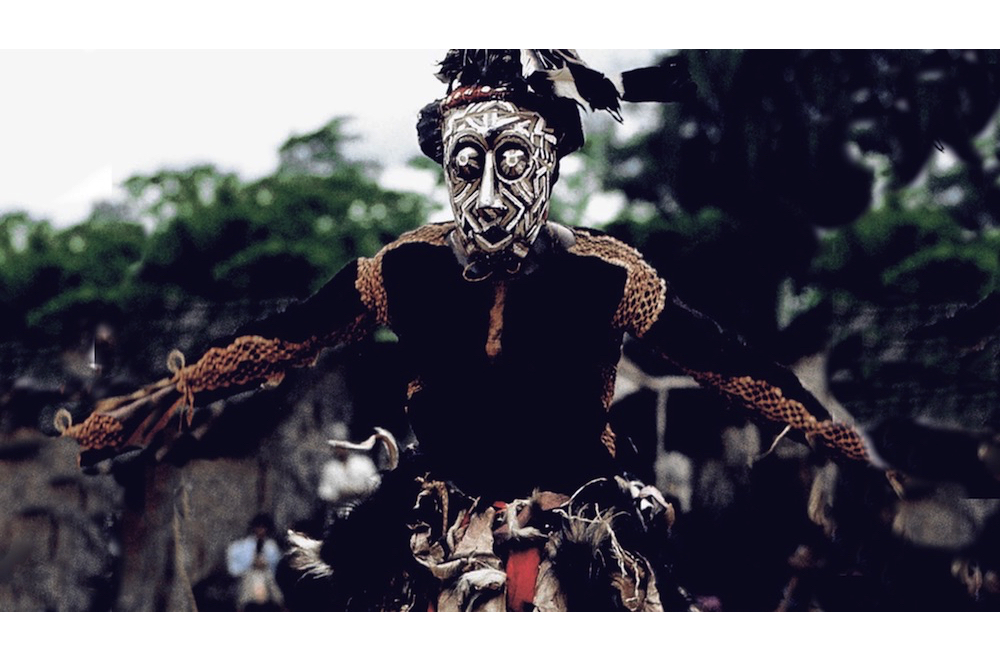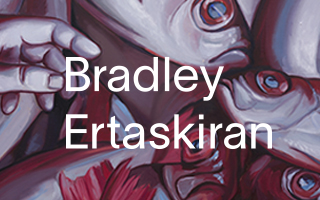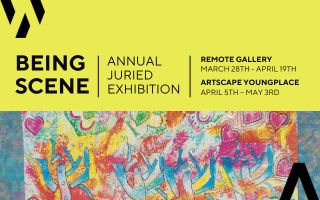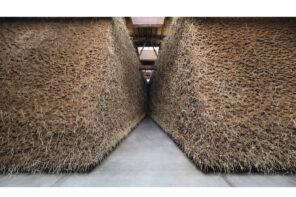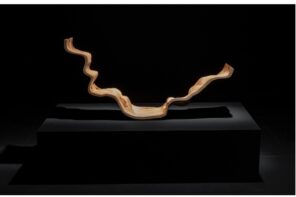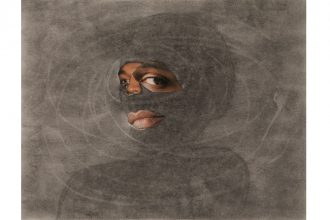Arthur Jafa’s exhibition at the Julia Stoschek Collection exceeds the oft-recited cliché that “context matters.” In Berlin, it forms an imagistic phenomena, like some luminescent and buckling drug.
The show comprises a montage of projected videos, printed photographs, and assemblages, all refracting African American culture and history. At times, the show’s components are of Jafa’s own creation; more often they are borrowed, from YouTube or artist colleagues. A shifting soundtrack, transmitted through wireless headphones, deepens their kaleidoscopic effect. Viewers slide and snap through a scale of emotional responses, concomitant to a way of being human that we’ve learned to call blackness – an adjective that, depending on who’s using it, signifies either an esteemed heritage or a reductive essentialism. Although Jafa defensibly advises that white people – like myself – are not his addressees, his work’s effect persists across racial boundaries. All the same, his admonition emphasizes a condition that should probably be obvious; for a universal audience, the show’s significance follows – necessarily – behind its specific importance and impact for black culture and black struggle.
On my first visit, the exhibition seemed to embody a familiar academic cliché. Its large and enveloping video montages appeared merely to illustrate how proliferating digital information has colonized consciousness. This impression was deepened by the degree to which Jafa works more as an editor than a transformer; left unaltered, his recontextualized material can feel didactic in intent. Upon returning two weeks later, the work sank into a deeper and more discordant effect. Gleaned from widely-available sources, Jafa’s Afrocentric material unites a broader viewership under shared recognition. But Jafa also refuses this coherence, prodding at the way our felt relationship to these specifically black images differs in concert with a racialized and racist world. Only twice do white protagonists appear, both times in flailing YouTube monologues on white supremacy and – in a cringeworthy moment – so-called reverse racism. These clips have the perverse magnetism of car crashes. They are the vehicles of disorienting impact: soulful, gutting, critical.
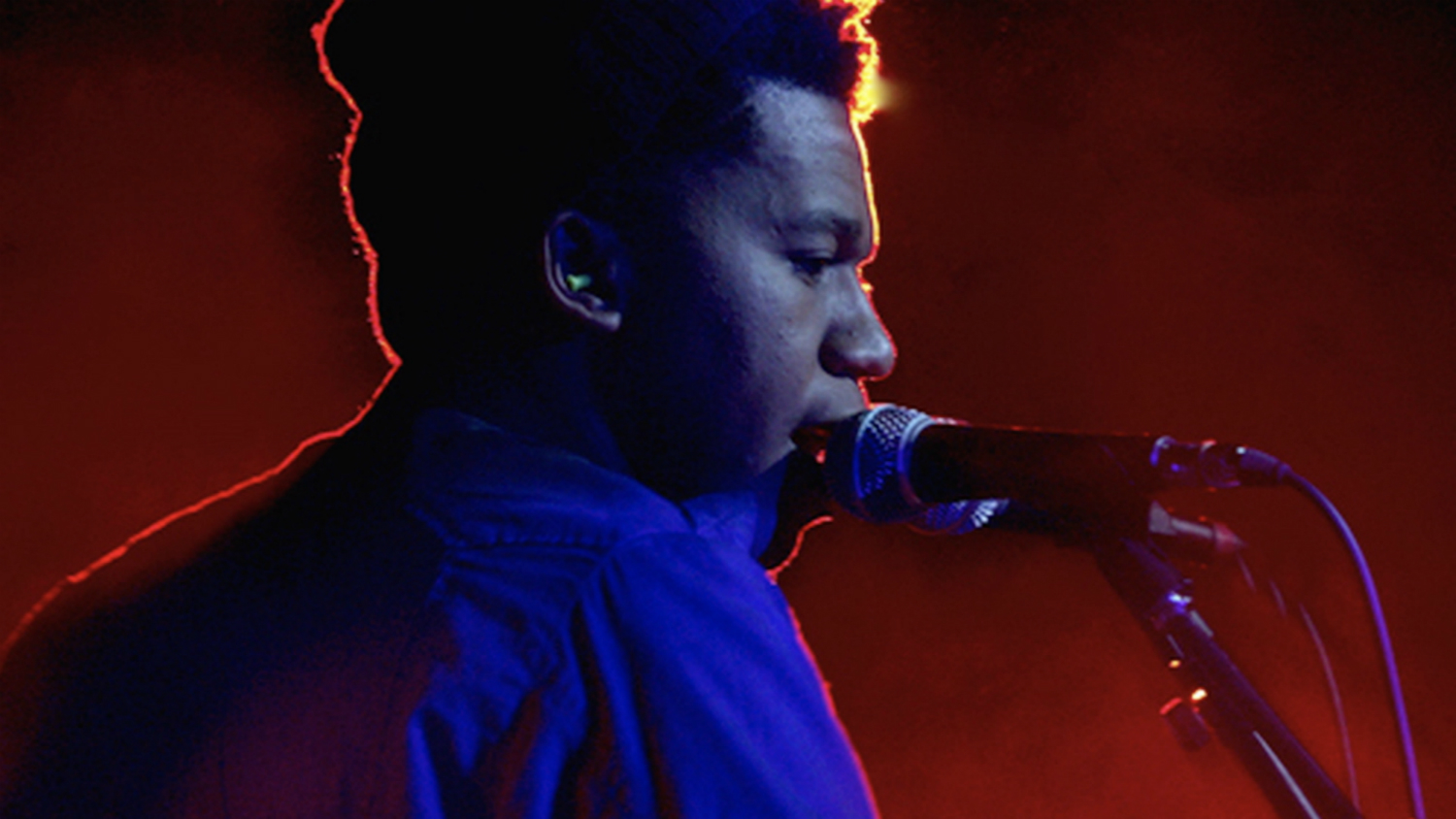
Arthur Jafa, “APEX” (video still), 2013. Courtesy of the artist and Gavin Brown’s Enterprise, New York City, Rome.
Most people will hear Jafa’s show before seeing it. As I entered the gallery, Eddie Hazel’s guitar riffs reverberated through wireless headphones, synching with a huge YouTube video projected on the wall. Throughout, similar audio clips ran on four channels, aligning and misaligning with as many video projections. Scenes pinched from the web traded with hi-def, cinematic shots. Owing to this mash-up structure, Jafa’s sounds and images now swirl in memory; Al Green’s God Blessed Our Love (Live from Soul Train) fades, for instance, into Alice Smith’s tempestuous cover of Screamin’ Jay Hawkins’s I Put a Spell on You. The exhibition disrupts any expectation of causal progression, instead it immersively illuminates relationships between images. Sometimes, tragedy and comedy interchange. Baffled and unbelieving responses to Michael Brown’s murder at one point give way to video of the rapper Plies drawling mockery into his camera phone. Later tears search down a woman’s face before the projection switches to another black woman, just walking.
Having bridged contemporary art with a career directing films and music videos, Jafa is himself part of the cultural memory of blackness. So is Khalil Joseph, the Hype Williams protégé, whose 2013 film Wildcat shares a projector screen with a crackling repurposed documentary here, and scenes from a reality-TV-style drama. Wildcat‘s dreamy soundtrack, composed by Steven Ellison (AKA Flying Lotus), emphasizes the black memory-palace effect of Jafa’s curating: Ellison is the grand-nephew of Alice Coltrane, the transcendent jazz pianist, married to John Coltrane. The Coltranes aren’t present in photographs by Ming Smith, which hang amidst Jafa’s work and also hold their own room. But Sun Ra appears as one of Smith’s signature black-and-white plasmic blurs. Smith’s prints suggest Robert Frank’s camera set adrift in some dreamy Harlem fog.

Ming Smith, “Mother and Child,” ca.1977. Courtesy of the artist and Steven Kasher Gallery, New York City.
The countless nightmares inflicted by white people upon African American and Diasporic black communities loom brutally in immense murals reproducing historical photos. One crushing image shows a destroyed Black man, grinned over by white American faces like awful moons. Jafa considers his work an opportunity for white viewers to develop a psychological “muscle,” allowing us to accept that our collective experience is not always central – not always the priority. He’s right. But the white faces in this image also furnish a nauseating reminder of what someone like myself might’ve been capable of, had I been born in another time and place: the antebellum South, 1940s Germany, colonial Canada. Never settling into a stable historical narrative, Jafa’s photo murals also show armed black resistance and disturbing records of black integration – a crowd of African American children pledging allegiance to the flag with a gesture echoing the Nazi Sieg Heil.
This unavoidable association foregrounds the complex fact of Jafa’s exhibition showing in Berlin. This is the capital of a country that only seventy-three years ago committed an act of racist violence so enormously singular as to eclipse its brutal colonial crimes in Africa. These overlapping histories give Jafa’s show a particularly complicated resonance. Recently, black German activists and journalists have drawn attention to this colonial history, particularly in Namibia, where local activists describe techniques of mass-murder predicting those of the Third Reich. It’s a large question, what this American-centered show might mean for the black German community, and for a Germany wherein white nationalism is slowly regaining ground in the realm of acceptable publicly-held belief. At the very least, Jafa’s show underlines the fact that networks of colonial depredation – and resistance to it – span continents and oceans.
This relationship between oppression and resilient spirit comprises the affective core of Jafa’s work. The artist’s constant sonorous juxtaposition of jarring imagery rings with Cornel West’s description of how dissonance in jazz and the blues has expressed a constant coupling of struggle and uplift. In Aria Dean’s scrupulous essay about Jafa’s methodology – which he self-describes as Black Visual Intonation – the artist and writer explains that:
Jafa has worked to translate this idea of “worrying the note” into cinematic practice. The term is a mutation of “worried note,” a synonym of “blue note,” a note played or sung at a slightly different pitch than is standard in Western scales and notation. Worried notes … evince black music’s tendency to treat sound as unstable, unlike the exacting constructions of Western harmony.
Further, Dean writes that Jafa’s work searches a “black way of knowing the world” that can be found in the works of the first major black American filmmaker Oscar Micheaux, whose style Jafa sees “as matching the rhythms of Thelonius Monk, treating time like putty, and demolishing linear composition.”
Jafa achieves tremendous – if unwieldy – effect, by combining this technique with a particularly brave use of images. His documentary murals risk pulling art into the heavy-handed realm of museum display, but instead operate like howling bass-lines behind more singular, compact works. Amongst these are instances when Jafa’s entrance into a sculptural use of images corresponds too flatly with the now-fading sensation of post-internet art. But by imbuing these tropes with hefty meaning, he tends to cast such concerns as petty and besides-the-point. The infamous photograph of A Former Slave named Gordon (1863), for instance, has been translated into a three-dimensional plastic relief; Gordon’s scarred back jars with the unnaturally smooth material. In its implicit reference to product manufacturing, the plastic is analogous to the deceptive sleekness of the innate violence of late capitalism in America, whose origins lie partly in the mass crime that Gordon’s body now signifies.
In a very complicated way, then, this is also an exhibition about texture. Its surfaces testify to love and violence, both in bodies and in art: from the duplicitous smoothness of photography to digital video, whose broken cloudiness signals what Hito Steyerl affirmatively described as “the poor image” – a valuation of degraded digital images, for their democratic shareability. This is why, I think, Jafa prints his own photographs large and almost floppy. When we see a coal-dust-black-and-white portrait of the artist holding a medium-format camera, or a diptych joining a graphic of Mickey Mouse with a photo of a white man’s painted skull-face, glare ripples across the photographic paper. Here is the medium’s weakness transmuted into the strength of enunciated failure.
By way of these photographs, a viewer’s attention is often drawn to corners. The artist has a curious habit of mounting his work with cartoonishly large photo-album triangles, or wide strips of tape. Sometimes, this play with the image’s materiality feels too direct. But these moments always pass. The strategies flirt with gimmickry before assuming their roles in a choral study of how culture’s production runs alongside the construction of people.

